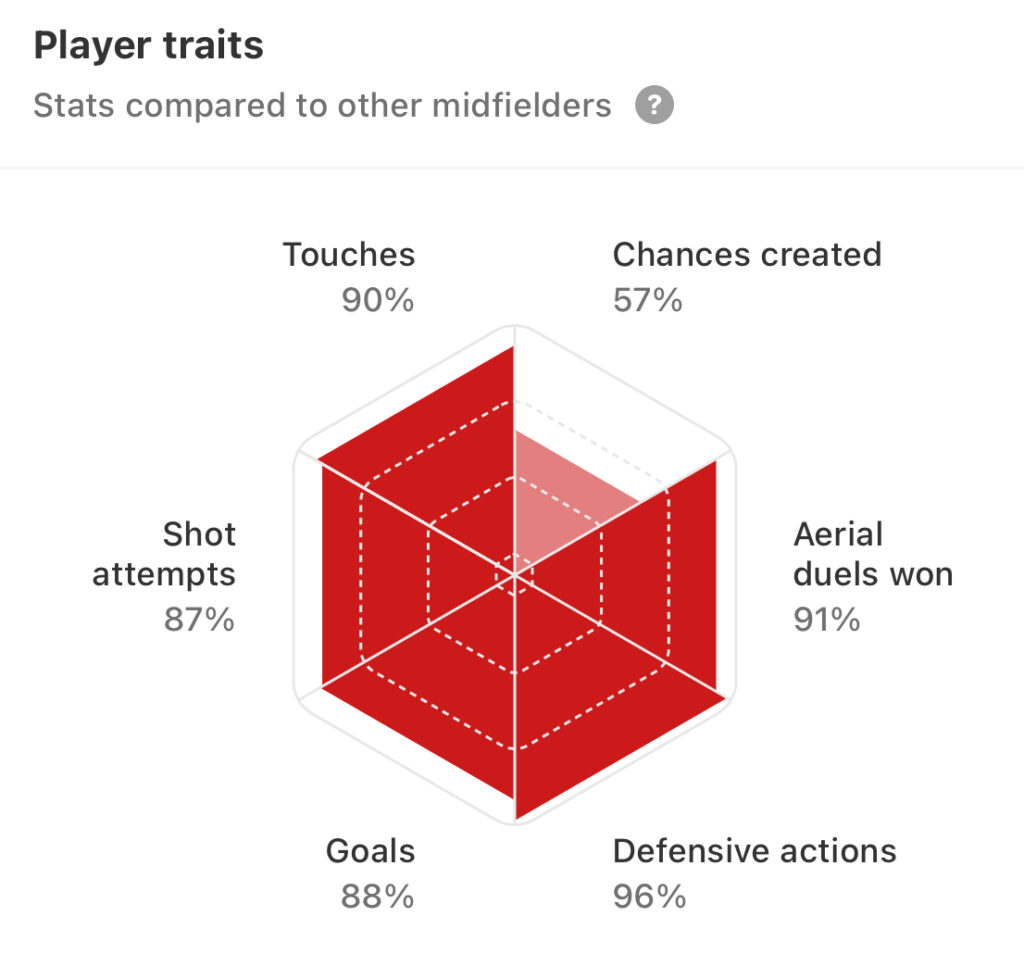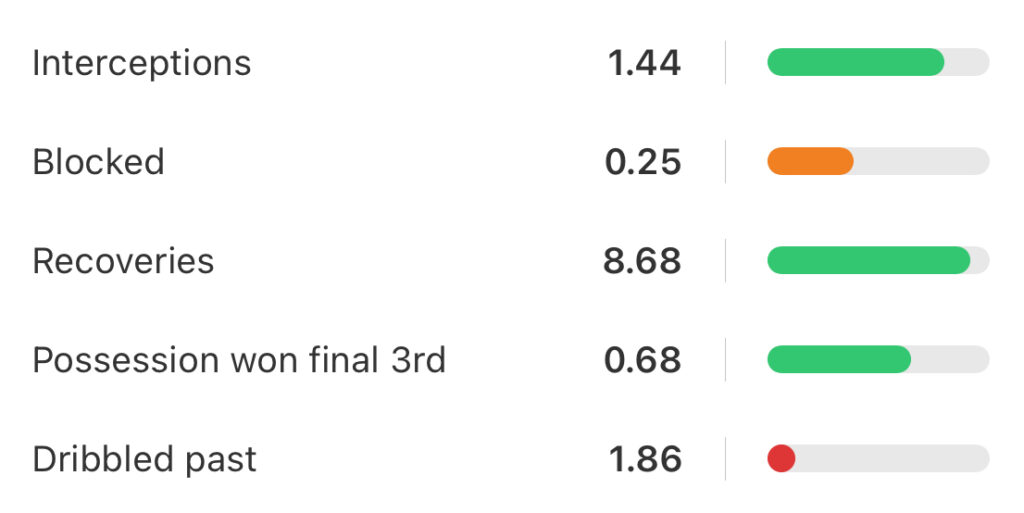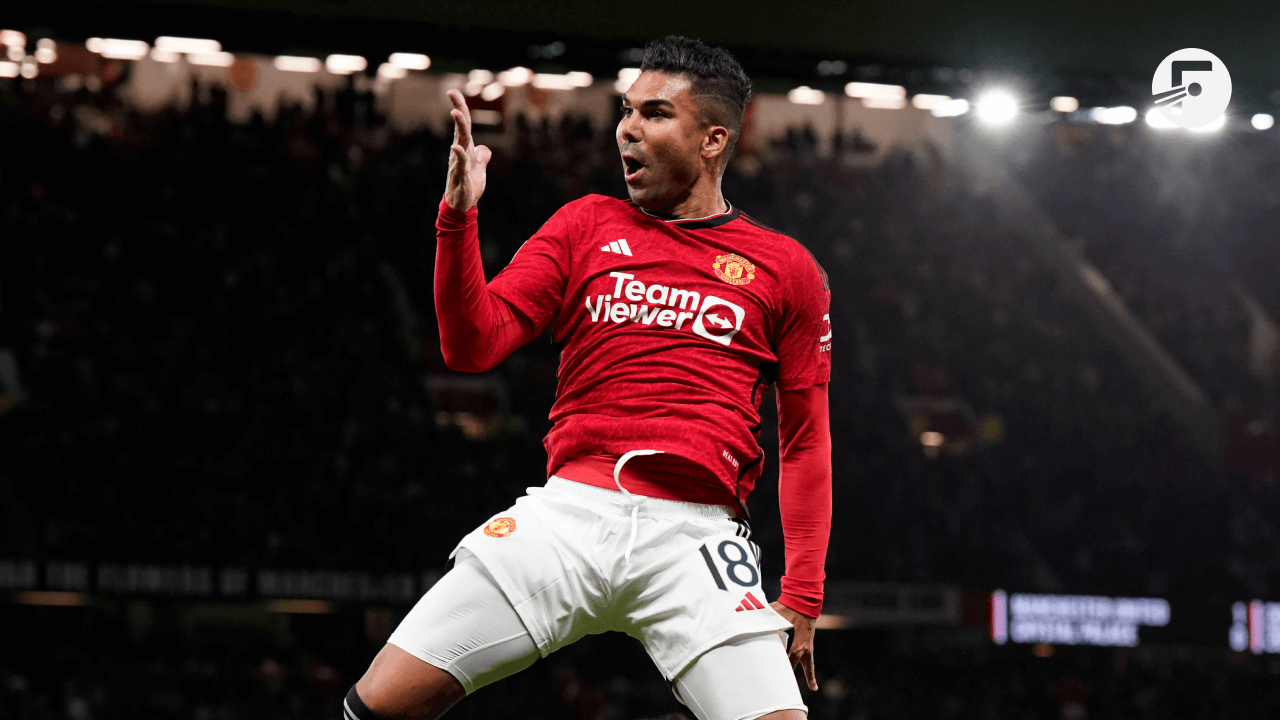Casemiro finds himself at a strange crossroads in his career. At 32, his stock seems to be declining and Manchester United could soon move on without him only two years after the big money move to Old Trafford. And it can be said that the Brazilian’s downfall has been abrupt.
For some, the signs were always there. Casemiro’s defensive presence deep in midfield had elevated Erik ten Hag’s Manchester United after a tough start to the 2022/23 season. It almost seemed as if the signing from Real Madrid was everywhere whenever United defended, as he helped the side win the ball back and play it forward as quickly as possible to the runners in-behind.
He popped up with vital goals too, acting as an important presence in the box during set-pieces. He was prolific at using smart longer balls to wide areas, setting up the wide players amidst criticism that he wasn’t going to be United’s solution in the first phase of build-up.
Despite his positives, the cracks became visible during United’s disastrous 7-0 loss to Liverpool at Anfield. The Brazilian suffered in midfield, as Jürgen Klopp’s side ran rings around him. While it wasn’t solely Casemiro’s fault, the 32-year-old suffered the most. He was constantly pressed to submission, as he failed to play out from pressure and couldn’t complete a single tackle. The signs, then, became very obvious. They became red flags.
Similar issues have persisted this season and while Erik ten Hag’s system has struggled to bring the best out of players and injuries have had an impact, Casemiro is one of the players who has suffered the most despite him offering some advantages that have already been mentioned.
With reports stating that the Real Madrid hero could now be on his way out of Old Trafford in the summer, multiple reasons can be explored for why things have turned sour the way they have.

Was he ever a solution?
It is always vital to remember the context of the signing. United chased Barcelona’s Frenkie de Jong throughout the summer of 2022 but on giving up on the Dutchman, the Red Devils proceeded to quickly sign Casemiro in a deal worth £70m when the midfielder was nearing 30.
It isn’t just the age and the financials related to it that makes one question the deal. Considering that the defensive midfield issue was a concern for United for many years, signing a younger midfielder would’ve made so much more sense for the club. On top of that, De Jong and Casemiro are completely different types of midfielders and that sheds light on United’s dysfunctional approach to recruitment.
De Jong is a press-resistant, ball-carrying midfielder who has thrived in a Ten Hag system in the past. Casemiro meanwhile, has always been a defence-first midfielder whose best traits aren’t on the ball. The move came rather abruptly, suggesting that it was probably a case of United miss-profiling a target when it comes to not just playing style, but also on the basis of age and money spent. All in all, it was a clear case of bad recruitment, something that no big club should do.
Constant bookings changed his natural style
Casemiro’s disciplinary record last season was fairly poor, as he picked up two red cards and seven yellow cards.

Even in his last season at Real Madrid, he racked up 11 yellow cards. In the 2020/21 season, he was sent off once and got nine yellow cards.
This suggests that Casemiro’s natural approach has always been aggressive off the ball. It is only since his arrival in the Premier League that he has been disciplined more strictly for reasons that are completely out of his control. As a result, the Brazilian has had to change his innate style out of fear of being booked or disciplined regularly and risking suspensions.
As a result, the defensive fall-off has been evident. He is being dribbled past more, making less interceptions and winning possession less in the final third this season.

He has been dribbled past 2.61 times per 90 minutes this season and has made 5.76 recoveries per 90 minutes. He has won possession in the final third only 0.27 times per 90 minutes.

Whereas last season, those numbers were mostly in the green. He was getting dribbled past much less and he was winning the ball back higher up the pitch more. He completed more interceptions successfully and made many more recoveries as well.
Having said that, the fear of being carded isn’t the only reason for that fall-off. Some of it is also down to the dysfunctionality of the system and how Casemiro doesn’t suit what Ten Hag intends to build.
System flaws or lack of suitability to the system
While some fans have accused Ten Hag of not having a system in place, the truth is that there is a system in place but it isn’t working well. There is also a suggestion that a Plan A is in place when United’s best ball progressors – Luka Shaw and Lisandro Martínez are fit, that hasn’t been seen. The current system sees United build with a back three and a midfielder in the first phase and that isn’t a shape that too many teams across Europe use on a regular basis. The idea is to play quickly through the lines and out of possession, United press high up the pitch but there has been a big gap between all three lines.
That was witnessed even against Fulham, when it took the visitors one pass to bypass the United press. Often, United’s backline was very close to their own box while pressing, isolating either Casemiro or Kobbie Mainoo in midfield. This made it easier for Fulham to transition against United and it is a pattern which has been observed constantly.
This has also played a role in Casemiro’s struggles, as he finds himself having too much to do when United lose the ball and the opposition break through from United’s press. More than that, Casemiro’s inability to play through the build-up phase in possession harms United. Even last season, he struggled to play through the opposition’s press, relying on first-time longer balls that may or may not reach the intended target. His presence or skill set in that already vulnerable setup brings further pressure onto United in possession.
More so, Ten Hag has always been insistent on ‘controlling’ games and while it is ironic that the current system isn’t doing that, Casemiro’s lack of ability to dictate play suggests that he isn’t a part of the future plans whenever United get better. It can be said that at Real Madrid, the presence of Toni Kroos and Luka Modrić made up for the Brazilian’s lack of ability to control games.
Being overused over time
In each of his last three seasons, Casemiro played over 2500 minutes in LaLiga. He was barely rested during that period and was a constant rock in front of their backline. Last season in the Premier League, he played 2125 minutes, despite him picking up suspensions. In total, he played 4000 minutes as United had to constantly rely on him to either score goals or because of his defensive abilities.
While this season was meant to be one when United signed another defensive midfielder, Sofyan Amrabat was signed as an option to be a defensive midfielder. But his best in Serie A came at Verona, where he was a box-to-box midfielder. Kobbie Mainoo’s emergence has been impressive but it remains to be seen if he ends up becoming a number six or a number eight. This has made sure that United still rely on Casemiro.
But considering how much the Brazilian has played over the years and how much his teams have relied on him, it seems natural that at 32, he would get slower. If one takes into account all these reasons, it is easy to see why Casemiro’s stock has fallen.
(Images from IMAGO)
You can follow every Manchester United game on FotMob – with deep stats, xG, and players ratings. Download the free app here.
